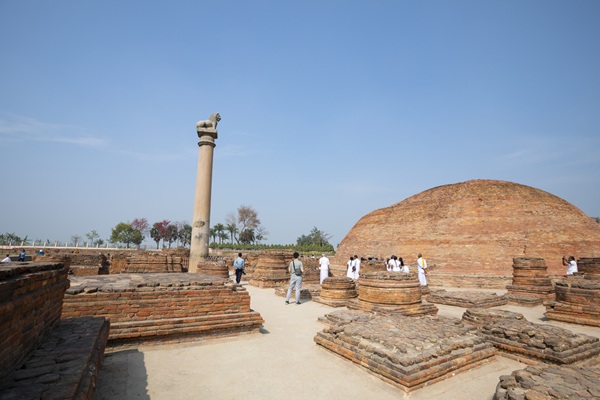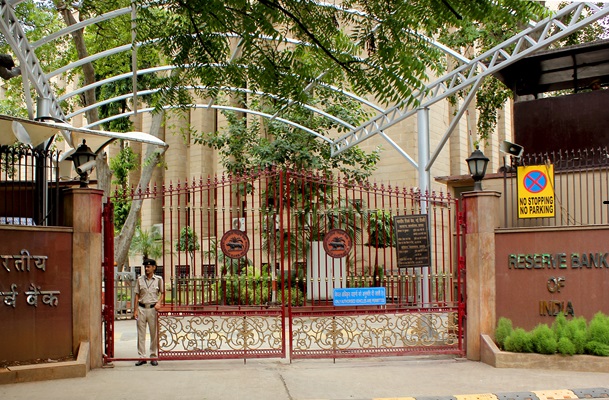.png)
Amitabh Tiwari, formerly a corporate and investment banker, now follows his passion for politics and elections, startups and education. He is Founding Partner at VoteVibe.
October 23, 2025 at 11:58 AM IST
As Bihar gears up for assembly election in 2025, the two major political formations have unveiled their candidate lists, revealing starkly different strategies that could determine the fate of the state's next government.
While the National Democratic Alliance partners—Janata Dal (United) and Bharatiya Janata Party—are placing faith in incumbent legislators, the Rashtriya Janata Dal has taken a bold gamble by bringing in fresh faces to counter mounting anti-incumbency sentiment.
Key Takeaways: Ticket Distribution by JDU, RJD,BJP and INC
The ticket distribution patterns across parties show calculated political arithmetic. The JDU and Indian National Congress have each dropped approximately 26% of their sitting MLAs, signalling a cautious approach. The BJP has been even more conservative, denying tickets to just 20% of its incumbent legislators.
In stark contrast, the RJD has taken the most aggressive stance, dropping 44% of its sitting MLAs, a move that shows the party's recognition of deep-seated voter dissatisfaction.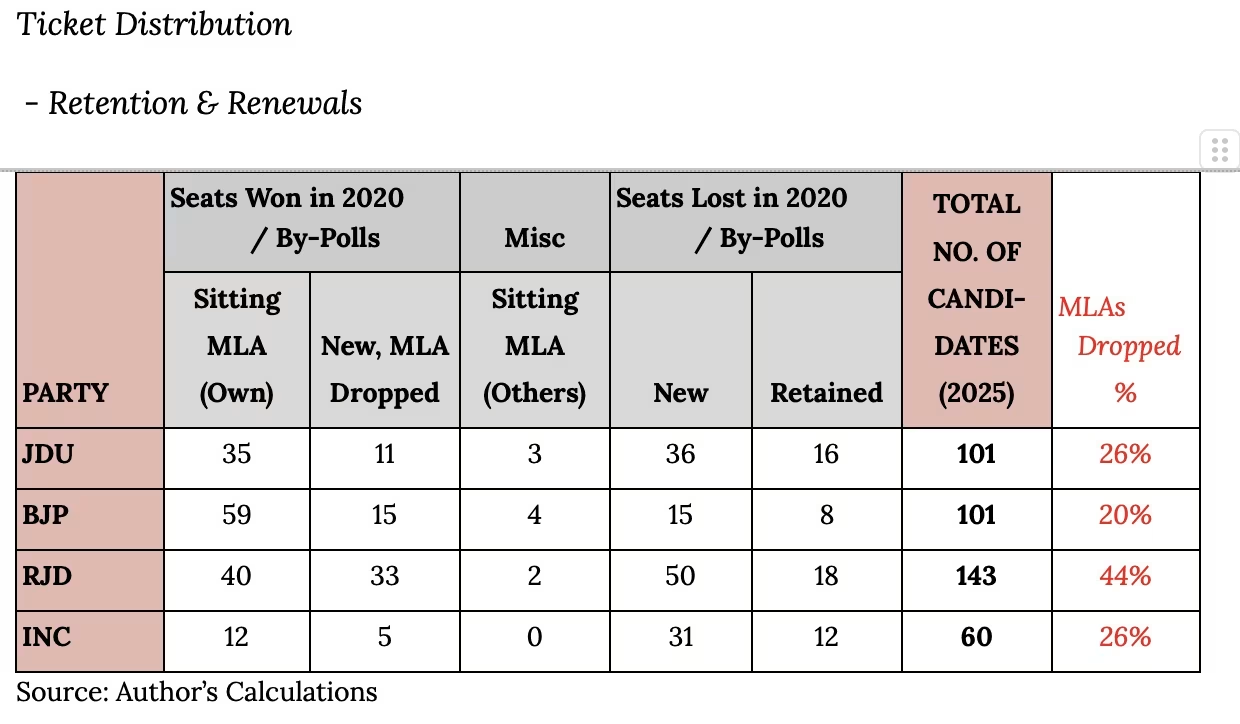
Also Read: The Battle of Two MYs: Decoding Bihar's Electoral Arithmetic
Why Did RJD Drop Nearly Half of Its Sitting MLAs?
The RJD's decision to field new candidates is rooted in a harsh political reality: opposition MLAs may face higher local-level anti-incumbency as they are not in power. This situation arises from what party insiders describe as a "delivery deficit."
Without access to government machinery and resources, opposition legislators often struggle to address constituency concerns, from infrastructure development to administrative interventions. Voters, often unaware of the limitations faced by opposition representatives, may hold them accountable for unmet expectations.
A recent VoteVibe survey has quantified this sentiment with sobering clarity, 53% of respondents indicated they would not vote for their current MLAs if they contested again. This damning statistic has served as a wake-up call for political strategists, particularly within the RJD, prompting the party leadership to opt for fresh candidates who come without the baggage of unfulfilled promises and accumulated grievances.
By introducing new faces, the RJD hopes to neutralise this anti-incumbency and offer voters a fresh choice.. The strategy represents a high-risk, high-reward gamble as the new candidates lack the name recognition and organisational base of incumbents but also avoid the accumulated resentment that has built up over the legislative term.
Candidate Selection Strategy in Bihar 2025: Renewal for RJD, Stability for NDA
The contrasting approaches reflect different assessments of what voters prioritise. The NDA's emphasis on experience suggests confidence that voters value proven administrators who can point to developmental work and governmental access. By retaining 74-80% of sitting legislators, BJP and JDU are banking on incumbency as an advantage rather than a liability.
The RJD's preference for new blood represents a counter-bet that voters are seeking change and will respond positively to candidates unburdened by past failures. This strategy also allows the party to introduce younger, more energetic campaigners who can match the opposition's ground-level mobilisation and appeal to younger as well as undecided/floating voters.
Also Read: The ABC and D of Bihar Elections
How Caste Equations Shape Candidate Selection in Bihar Election
Beyond the incumbent versus newcomer debate, both major formations have paid meticulous attention to caste demographics, , drawing lessons from the 2020 assembly elections. The data on "strike rates, i.e.the percentage of candidates from particular communities who won, has become the holy grail of ticket distribution committees.
Of the 486 candidates fielded by by NDA and MGB in the aggregate, 235 won the elections, translating into a strike rate of 48%. Five social groups exhibited higher than average strike rate - Yadav, Bania, Rajput, Kurmi and SC-ST. However, the composition of these groups is different for NDA and MGB.
MGB had an overall strike rate of 45%. Only Yadav, Kushwaha, Bania and SC-ST candidates displayed a higher strike rate. NDA had an overall strike rate of 51%. Only Bania, Rajput, Bhumihar, Kurmi, Kayastha and SC-ST candidates displayed a higher strike rate. Muslims displayed a lower strike rate even amongst MGB candidates while none of them won on the NDA ticket. 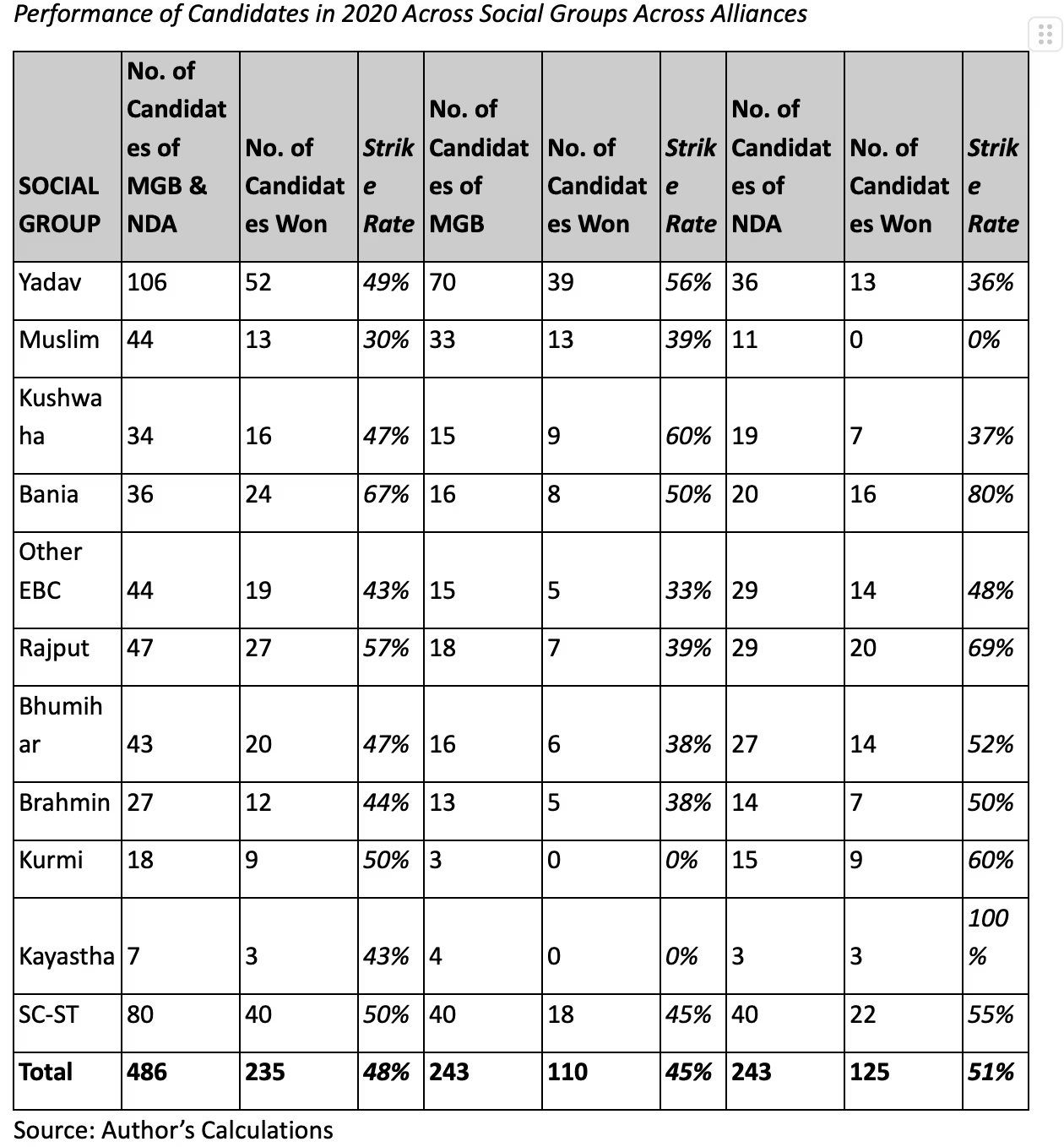
Keeping in mind the strike rates, the RJD has given a higher number of tickets to Yadavs and Kushwahas while JDU/BJP has given lower numbers of tickets to Muslims, higher to Upper Caste. By fielding more candidates from these groups, the MGB and NDA aim to consolidate their traditional support base while maximising electoral efficiency.
RJD has fielded 143 candidates out of which 51 are from Yadav and 14 from Kushwaha community, accounting for 45% of their tickets. It has given just 19 tickets to Muslims (their anchor voter base), accounting for 14% of candidates lower than their population of 18% primarily due to their lower strike rate of 39% in 2020. Muslim candidates of RJD suffer due to polarisation and vote division even in high minority population seats as evidenced in 2020. 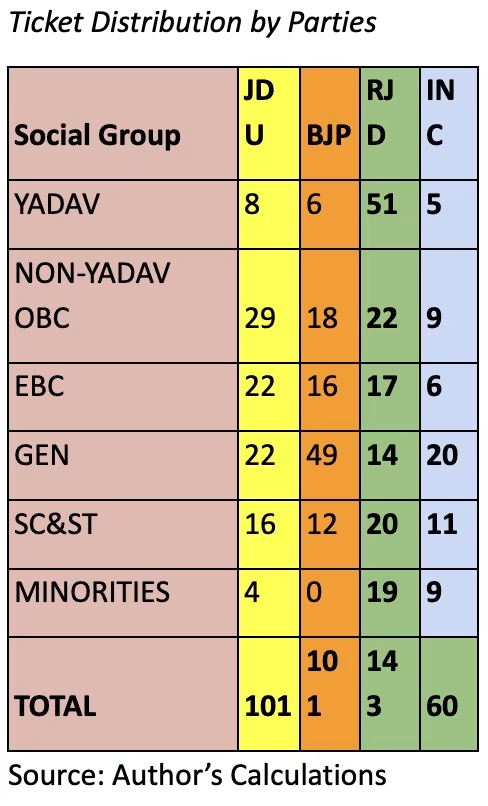
Meanwhile, the BJP and JDU have adopted a complementary strategy, BJP fielding more candidates from Upper Caste communities, while JDU from Kurmis (non-Yadav OBCs) /EBCs —groups that proved to be the backbone of NDA's performance in the previous election. The Kurmi community, to which Chief Minister Nitish Kumar belongs, has been particularly crucial for JDU's electoral prospects.
BJP has fielded 49 upper caste candidates, giving almost half of its tickets. JDU has given 29 and 22 tickets to NYOBCs and EBCs, accounting for half of its candidate list. Congress is attempting to broaden the MY base of MGB by fielding one-third upper caste candidates in a bid to damage the BJP, and 25% NYOBS/EBC candidates to weaken the JDU.
Also Read: As Bihar Turns Into a Battleground, Swing Voters Could Rewrite the Map
What Lies Ahead for Bihar’s 2025 Electoral Battle?
As political alliances in Bihar finalise their tickets, these distribution choices will face their ultimate test at the ballot box. The BJP-JDU strategy of backing experience must prove that governance credentials outweigh voter fatigue. The RJD's gamble on fresh faces needs to demonstrate that it can overcome anti-incumbency.
Underlying both approaches, however, is the unchanging reality of Bihar politics—caste remains the primary lens through which electoral outcomes are determined. The communities that turn out in force and vote cohesively will likely determine which strategy succeeds.
As political analysts pore over demographic data and past performance metrics, one thing remains certain: Bihar's electoral chessboard has been set, and the moves made in candidate selection may well determine who forms the next government in Patna.
